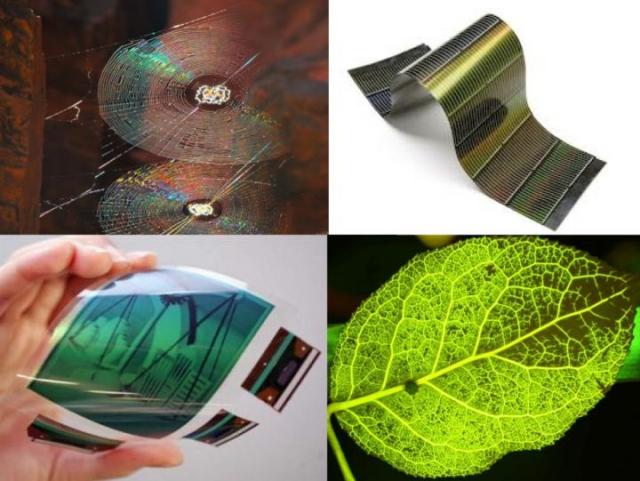A research team has reported that optoelectronic networks inspired by natural structures like leaves and spider webs perform four times as well as conventional designs.
 Refined by natural selection, spider webs and leaves serve as models for new and highly effective optoelectronic networks and displays. Credit: Boston College
Refined by natural selection, spider webs and leaves serve as models for new and highly effective optoelectronic networks and displays. Credit: Boston College
The study was a joint effort between Boston College and the South China Normal University. According to the researchers, structures like leaf venation and spider webs can be simulated to produce durable and flexible networks that can produce near optimal performance. These bio-inspired networks can be utilized in display screens, photovoltaic devices, and other optoelectronic.
This natural structure has been optimized through the evolutionary process for efficient nutrient delivery with maximal strength and light harvesting. In our application, these properties translate into highly efficient current transport, desirable mechanical properties, and minimal light shading. No other electrode network can be stretched more than 10 percent.
Krzysztof Kempa, Professor of Physics, Boston College
A network design inspired by the vein-laced pattern of leaves would be highly effective for light sources, solar cells, transparent heaters, and other similar applications. A second network, inspired by patterns in spider webs that are effective for trapping bugs and insects, provides a suitable means for drawing light through an optoelectronic device.
This "spider web" network could possibly be used in advanced display panels and touch screens, thanks to its high mechanical strength, excellent flexibility, uniformity, and high transparency.
In experimental studies, these networks showed excellent performance, providing a four-fold increase in key benchmark optical and electronic properties.
In addition, the spider web network can be expanded up to 125% of its original size without affecting the performance, and only a negligible decline was observed when the network was stretched even further to be twice as large.
These proposed network patterns could further enhance the efficiency of solar cells, as well as the performance of next generation of flexible display panels and touch screens. They could also make the manufacturing process simple and cost-effective.
"Our idea is quite simple and far-reaching. It starts with the premise that natural forms offer ready-made solutions for efficient designs, tested over millions of years through natural selection. Increasing efficiency of solar cells, in particular, is a critical component in the quest for renewable energy sources, a major sustainability and ecological challenge. Flexible monitors and displays will likely become increasingly important for such possible uses as wearable screens and elastic smart phones."
Andrzej Herczynski, Research Associate Professor of Physics, Boston College
The study has been published in the journal Nature Communications.